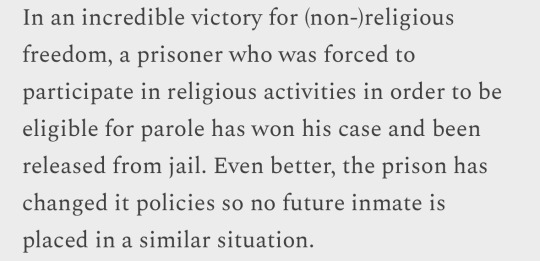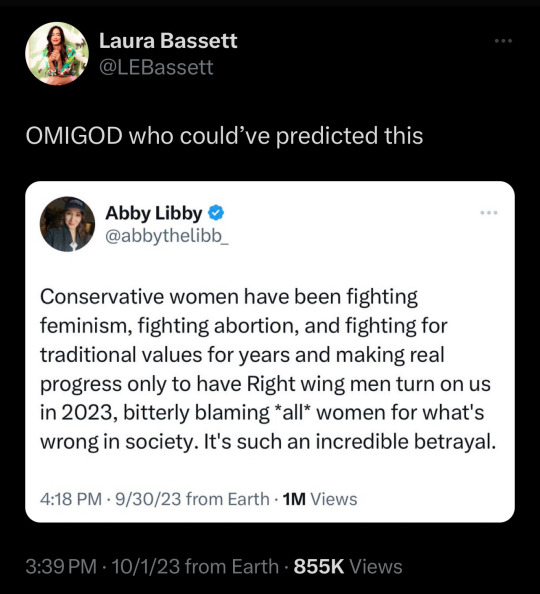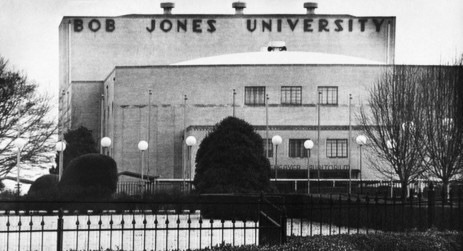#Christian justice
Explore tagged Tumblr posts
Text

Christian Justice: Christ Forgives and Comforts the Guilty (oil on canvas) | Jean Delville
22 notes
·
View notes
Text
Sodom was struck down because some of its people tried to rape angels, and it’s *whole entire populace* enjoyed it, supported it, and encouraged it.
“
The sun had risen upon the earth when Lot entered Zoar. Then the Lord rained brimstone and fire on Sodom and Gomorrah, from the Lord out of the heavens. So He overthrew those cities, all the plain, all the inhabitants of the cities, and what grew on the ground.
But his wife looked back behind him, and she became a pillar of salt.
“
Genesis 19:23-26
أَسْمَعُ, وَلْيَجْرِ الْحَقُّ كَالْيَاهِ، وَالْبِرُّ كَنَهْرٍ دَائِمٍ

#social justice#free palestine#human rights#gaza#palestine#gaza genocide#christian girl#orthodox christian#orthodox christianity#christian blog#christianity#orthodox#orthodoxy#Christian Justice#works of mercy#the first shall be last#Jesus would have crossed checkmarks with guns pointed in his mother’s face#Eastern Orthodox#Eastern Orthodoxy#Catholic#your brothers in Christ are dying by israeli hands#Catholicism#roman catholic
1K notes
·
View notes
Text


Source
This should never have been a thing
#religion#atheist#atheism#Christianity#prisons#abolish prisons#criminal justice#government#the left#news#current events
14K notes
·
View notes
Text










What You Need to Know about Project 2025
The GOP's Radical Plans for America's Future
graphics from @/pinballwizardess on tiktok
#politics#maga morons#project 2025#election 2024#us elections#joe biden#donald trump#abortion#pro life#pro choice#epa#global warming#please vote#vote biden#vote democrat#vote blue#fuck the gop#gop#reproductive rights#reproductive health#reproductive justice#reproductive freedom#education#educate yourself#educate yourselves#head start#christianity#christian privilege#jesus christ#civil rights
3K notes
·
View notes
Text
A Blessing of St. Dominic
May the Creator Bless us,
May the Redeemer heal us,
May the Holy Spirit enlighten us.
And give us eyes to see, ears to hear, and hands to do the work of God.
Feet to walk the path of justice.
And mouths to preach the good news.
May the angel of peace watch over us and lead us at last into the reign of God.
Amen
#Dominican blessing#st. dominic#prayers#justice#Christian justice#feet to walk the path of justice#hands to do the work of god
0 notes
Text

Lmao, Abby feels “betrayed” by Right wing conservative men, who been showing everyone they hated women literally from day one

#lol#politics#republicans#abby libby#abortion#lgbtq#womens rights#lgbt#reproductive rights#reproductive justice#martin niemoller#feminism#womanism#intersectional feminism#solidarity#trad wives#tradwives#christian nationalism#white supremacy
3K notes
·
View notes
Text
Nonsexual nudity needs to be fully accepted in our society. It should be legal in public. It should be allowed in media regardless of rating or target audience. There is nothing about the human body that is inherently harmful to see or inherently sexual. Reblog if you agree.
#196#my thougts#leftism#leftist#proship#anti censorship#anti capitalist#anti christianity#free speech#anarchism#libertarian socialism#social issues#social justice#queer#proshipper safe
2K notes
·
View notes
Text

Mine oh mine oh mine oh mine oh mine
#Christianity and it's relationship to resource consumption and the future and so on I'm never good at explaining it#art of mine#natural resources#climate change#climate justice#illustrators on tumblr#artists on tumblr
220 notes
·
View notes
Text
"Many Palestinian Christians are unable to celebrate Easter this year, as Israel’s bombardment of Gaza continues.
"Gaza’s Christian community of less than 1,000 people is facing threats of extinction. Palestinian Christian pastor Rev. Dr. Munther Isaac shares his message for the world about the plight of Palestinians this Easter." from AJ Plus, 31/Mar/2024:
#easter#happy easter#christianity#palestinian christians#palestine#free palestine#gaza#free gaza#from the river to the sea palestine will be free#i stand with palestine#rafah#save rafah#human rights#social justice#this is genocide
542 notes
·
View notes
Text


Thus, Socrates says that "sophrosyne is something divine" (Carmides, 174b) and that "the sensible man is a philosopher" (Carmides, 174c).
[Enkrateia and sophrosyne in Plato: a comparative study of the dialogues Carmides, Gorgias, Republic, Politius and Laws - Juan Carlos Tellería Sebastián]
#honestly just randomly chose a classical virtue#bcause the christian ones weren't compelling#tokyo's most repressed and psychosexual man everrrrr#jk akechi exists#i saw noir as a prompt for shuake week & then i lost my senses#spent too long sketching comic panels </3#barely managed to refocus on posting something#palace au#persona 5#p5#persona 5 royal#p5r#procreate#2024#persona 5 protagonist#akira kurusu#5.5 hours#im not sure if temperance does really align with pego#but i thought about that one scene from proof of justice ova#where law points to pego & neutral+chaos points to akechi#+ the idea of sophrosyne & the analogy of the soul and the state#i didnt read the whole pdf okay.
272 notes
·
View notes
Text
💔🤬My God. They discover the obliterated and desecrated remains of their dear mother who was bombed to death moments ago by the United States and Israel. SHAME ON THIS WORLD and all of its cowardly leaders. I’m ashamed to be human right now.
#palestine#free palestine#gaza#humanity#children#december#kids#save palestine#mother#house#home#family#palestinian christians#palestinian culture#palestine resistance#palestina#talk about palestinians#palestinians lives matters#justice for palestinians#palesources#israel is a terrorist state#boycott israel#israel is an apartheid state#israel terrorist#fuck israel#stop war#war criminals#war crimes#war
703 notes
·
View notes
Text

On the 10 Commandments:
——-
The Third Commandment Explained
——————
People often still debate the meaning of what God’s Commandments are after the numerous translations. The Orthodox Jewish Bible actually contains the transcript of that speech I gave that day in Shemot 20.
And in my own words: If you do not hold anything else, hold & speak my commandments. Let us review the originals as they were intended- the speech with the teaching summary. Any & all attempts to do harm and/or cause suffering by bypassing the Commandments with “loopholes” will be considered with harsh penalty.
3 “Thou shalt not take the Shem Hashem Eloheicha in vain; for Hashem will not hold him guiltless that taketh Shmo in vain.”
Shemot 20:7 TOJB2011
https://bible.com/bible/130/exo.20.7.TOJB2011
Stop claiming something is the word of the Christian God or done in the name of God when it is for evil. Vain as a concept is frequently misinterpreted. This is actually closer to the same definition in the sentence as “why do I speak? In vain?”. It’s’ persuading individuals to take action & it’s against one’s own belief/word/self that you claim to believe in. So it’s actual meaning is don’t use Christian teachings purposefully to manipulate others, mislead, & cause people to do evil.
Do not do what the antichrist does.
#christianity#angel#bible#faith#holy bible#holy spirit#writing#jesus#religion#christian faith#Moses#prophet#law#Justice#human rights#Christ#love#humanity
188 notes
·
View notes
Text
When 12,300 children have been killed, it’s a war against those children, not a war against Hamas.
#free palestine#palestine#free gaza#gaza#palestine positng#christianity#islam#muslim#social justice#current events#human rights#genocide#ethnic cleansing#crimes against humanity#war crimes#end genocide#endisrealsgenocide
447 notes
·
View notes
Photo






#I made this set bc I want to have quick visual reference when reading fics#superbat#superman#batman#bruce wayne#clark kent#ben affleck#henry cavill#robert pattinson#Brandon Routh#Christian Bale#Batfleck#battinson#man of steel#superman returns#the dark knight#batman v supeman: dawn of justice#the batman#batwoman#arrowverse#dc#edit
2K notes
·
View notes
Text
“The truth about the sniping and martyrdom of my uncle’s wife, Naheda Bulus, and my cousin, Samar Anton.”
Reposted from anji.ghattas on TikTok from December 19, 2023
#palestine#free palestine#gaza#israel#christmas#christianity#signal boost#social justice#human rights#middle east#church#christians
652 notes
·
View notes
Text

One of the most durable myths in recent history is that the religious right, the coalition of conservative evangelicals and fundamentalists, emerged as a political movement in response to the U.S. Supreme Court’s 1973 Roe v. Wade ruling legalizing abortion. The tale goes something like this: Evangelicals, who had been politically quiescent for decades, were so morally outraged by Roe that they resolved to organize in order to overturn it.


This myth of origins is oft repeated by the movement’s leaders. In his 2005 book, Jerry Falwell, the firebrand fundamentalist preacher, recounts his distress upon reading about the ruling in the Jan. 23, 1973, edition of the Lynchburg News: “I sat there staring at the Roe v. Wade story,” Falwell writes, “growing more and more fearful of the consequences of the Supreme Court’s act and wondering why so few voices had been raised against it.” Evangelicals, he decided, needed to organize.
Some of these anti- Roe crusaders even went so far as to call themselves “new abolitionists,” invoking their antebellum predecessors who had fought to eradicate slavery.
But the abortion myth quickly collapses under historical scrutiny. In fact, it wasn’t until 1979—a full six years after Roe—that evangelical leaders, at the behest of conservative activist Paul Weyrich, seized on abortion not for moral reasons, but as a rallying-cry to deny President Jimmy Carter a second term. Why? Because the anti-abortion crusade was more palatable than the religious right’s real motive: protecting segregated schools. So much for the new abolitionism.
Today, evangelicals make up the backbone of the pro-life movement, but it hasn’t always been so. Both before and for several years after Roe, evangelicals were overwhelmingly indifferent to the subject, which they considered a “Catholic issue.” In 1968, for instance, a symposium sponsored by the Christian Medical Society and Christianity Today, the flagship magazine of evangelicalism, refused to characterize abortion as sinful, citing “individual health, family welfare, and social responsibility” as justifications for ending a pregnancy. In 1971, delegates to the Southern Baptist Convention in St. Louis, Missouri, passed a resolution encouraging “Southern Baptists to work for legislation that will allow the possibility of abortion under such conditions as rape, incest, clear evidence of severe fetal deformity, and carefully ascertained evidence of the likelihood of damage to the emotional, mental, and physical health of the mother.” The convention, hardly a redoubt of liberal values, reaffirmed that position in 1974, one year after Roe, and again in 1976.
When the Roe decision was handed down, W. A. Criswell, the Southern Baptist Convention’s former president and pastor of First Baptist Church in Dallas, Texas—also one of the most famous fundamentalists of the 20th century—was pleased: “I have always felt that it was only after a child was born and had a life separate from its mother that it became an individual person,” he said, “and it has always, therefore, seemed to me that what is best for the mother and for the future should be allowed.”
Although a few evangelical voices, including Christianity Today magazine, mildly criticized the ruling, the overwhelming response was silence, even approval. Baptists, in particular, applauded the decision as an appropriate articulation of the division between church and state, between personal morality and state regulation of individual behavior. “Religious liberty, human equality and justice are advanced by the Supreme Court abortion decision,” wrote W. Barry Garrett of Baptist Press.
So what then were the real origins of the religious right? It turns out that the movement can trace its political roots back to a court ruling, but not Roe v. Wade.
In May 1969, a group of African-American parents in Holmes County, Mississippi, sued the Treasury Department to prevent three new whites-only K-12 private academies from securing full tax-exempt status, arguing that their discriminatory policies prevented them from being considered “charitable” institutions. The schools had been founded in the mid-1960s in response to the desegregation of public schools set in motion by the Brown v. Board of Education decision of 1954. In 1969, the first year of desegregation, the number of white students enrolled in public schools in Holmes County dropped from 771 to 28; the following year, that number fell to zero.
In Green v. Kennedy (David Kennedy was secretary of the treasury at the time), decided in January 1970, the plaintiffs won a preliminary injunction, which denied the “segregation academies” tax-exempt status until further review. In the meantime, the government was solidifying its position on such schools. Later that year, President Richard Nixon ordered the Internal Revenue Service to enact a new policy denying tax exemptions to all segregated schools in the United States. Under the provisions of Title VI of the Civil Rights Act, which forbade racial segregation and discrimination, discriminatory schools were not—by definition—“charitable” educational organizations, and therefore they had no claims to tax-exempt status; similarly, donations to such organizations would no longer qualify as tax-deductible contributions.
On June 30, 1971, the United States District Court for the District of Columbia issued its ruling in the case, now Green v. Connally (John Connally had replaced David Kennedy as secretary of the Treasury). The decision upheld the new IRS policy: “Under the Internal Revenue Code, properly construed, racially discriminatory private schools are not entitled to the Federal tax exemption provided for charitable, educational institutions, and persons making gifts to such schools are not entitled to the deductions provided in case of gifts to charitable, educational institutions.”
Paul Weyrich, the late religious conservative political activist and co-founder of the Heritage Foundation, saw his opening.
In the decades following World War II, evangelicals, especially white evangelicals in the North, had drifted toward the Republican Party—inclined in that direction by general Cold War anxieties, vestigial suspicions of Catholicism and well-known evangelist Billy Graham’s very public friendship with Dwight Eisenhower and Richard Nixon. Despite these predilections, though, evangelicals had largely stayed out of the political arena, at least in any organized way. If he could change that, Weyrich reasoned, their large numbers would constitute a formidable voting bloc—one that he could easily marshal behind conservative causes.
“The new political philosophy must be defined by us [conservatives] in moral terms, packaged in non-religious language, and propagated throughout the country by our new coalition,” Weyrich wrote in the mid-1970s. “When political power is achieved, the moral majority will have the opportunity to re-create this great nation.” Weyrich believed that the political possibilities of such a coalition were unlimited. “The leadership, moral philosophy, and workable vehicle are at hand just waiting to be blended and activated,” he wrote. “If the moral majority acts, results could well exceed our wildest dreams.”
But this hypothetical “moral majority” needed a catalyst—a standard around which to rally. For nearly two decades, Weyrich, by his own account, had been trying out different issues, hoping one might pique evangelical interest: pornography, prayer in schools, the proposed Equal Rights Amendment to the Constitution, even abortion. “I was trying to get these people interested in those issues and I utterly failed,” Weyrich recalled at a conference in 1990.
The Green v. Connally ruling provided a necessary first step: It captured the attention of evangelical leaders , especially as the IRS began sending questionnaires to church-related “segregation academies,” including Falwell’s own Lynchburg Christian School, inquiring about their racial policies. Falwell was furious. “In some states,” he famously complained, “It’s easier to open a massage parlor than a Christian school.”
One such school, Bob Jones University—a fundamentalist college in Greenville, South Carolina—was especially obdurate. The IRS had sent its first letter to Bob Jones University in November 1970 to ascertain whether or not it discriminated on the basis of race. The school responded defiantly: It did not admit African Americans.
Although Bob Jones Jr., the school’s founder, argued that racial segregation was mandated by the Bible, Falwell and Weyrich quickly sought to shift the grounds of the debate, framing their opposition in terms of religious freedom rather than in defense of racial segregation. For decades, evangelical leaders had boasted that because their educational institutions accepted no federal money (except for, of course, not having to pay taxes) the government could not tell them how to run their shops—whom to hire or not, whom to admit or reject.
The Civil Rights Act, however, changed that calculus.
(continue reading)
#politics#republicans#paul weyrich#abortion#religious riech#bob jones university#jerry falwell#christian nationalism#white supremacy#desegregation#project 2025#roe v wade#reproductive rights#reproductive justice#healthcare#brown v board of education#heritage foundation#moral majority#religious freedom#religion
194 notes
·
View notes